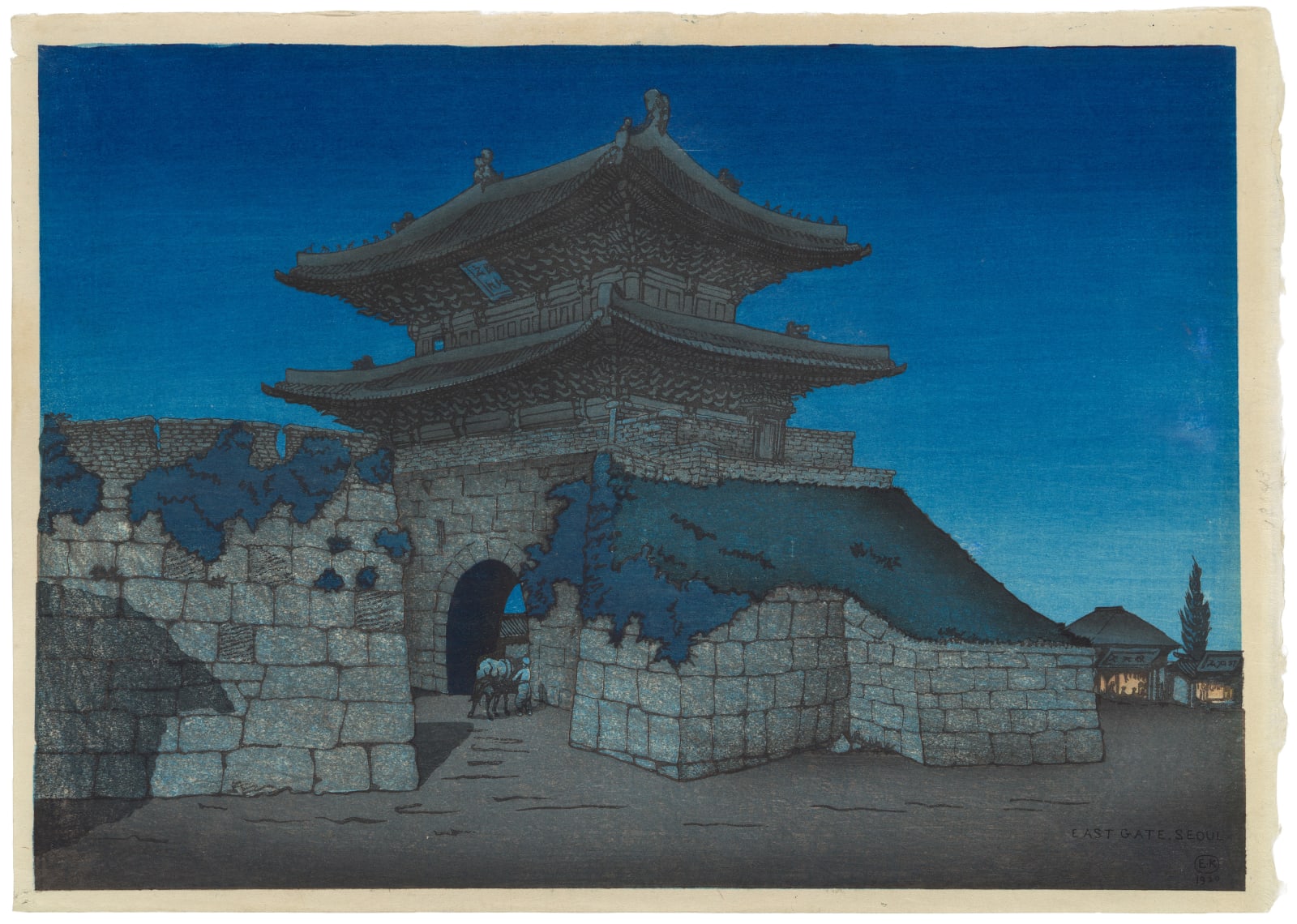Elizabeth Keith (1887-1956)
East Gate, Seoul (By Moonlight), 1920
Woodblock print
Extremely faint trace of artist’s signature at lower right
Artist's seal: 'E.K.' at lower right
Dated: 1920 at lower right
Extremely faint trace of artist’s signature at lower right
Artist's seal: 'E.K.' at lower right
Dated: 1920 at lower right
31.8 x 44.9 cm. (12 ½ x 17 ⅝ in.)
Good impression and colour. The artist's signature below the title at lower right is rubbed, leaving a very faint, almost invisible and partial impression only.
A small tear at the bottom left edge, slight wear to top left corner with a small nick on left side, two very small areas of re-touching of blue pigment at the right-hand edge. Trace of pencil inscription on right margin.
A small tear at the bottom left edge, slight wear to top left corner with a small nick on left side, two very small areas of re-touching of blue pigment at the right-hand edge. Trace of pencil inscription on right margin.
£2000 (+20% tax for UK buyers)
Heunginjimun Gate, more commonly known as Dongdaemun Gate (Great Eastern Gate), is designated a treasure by the Korean government and appreciated for its fine architecture. During the Joseon Dynasty the...
Heunginjimun Gate, more commonly known as Dongdaemun Gate (Great Eastern Gate), is designated a treasure by the Korean government and appreciated for its fine architecture. During the Joseon Dynasty the gate was one of eight city gates along the historic Seoul City Wall, serving as the main gate for the eastern part of the city.
'East Gate, Seoul' was issued in an edition of around 30 prints. The imposing gate is depicted in moonlight in a subdued pallet of greys, blues and green. A warm glow emanates from two establishments in the distance on the right. Keith paid particular attention to the texture of the stone wall, which was skilfully delivered by the block carver and printer - using the baren (circular printing pad) to produce faint swirls in the pattern, as well as using a cloth loaded with pigment to apply colours to the stones by tapping (tatakizuri) in the stones to mimic the rough surface.
'East Gate, Seoul' was issued in an edition of around 30 prints. The imposing gate is depicted in moonlight in a subdued pallet of greys, blues and green. A warm glow emanates from two establishments in the distance on the right. Keith paid particular attention to the texture of the stone wall, which was skilfully delivered by the block carver and printer - using the baren (circular printing pad) to produce faint swirls in the pattern, as well as using a cloth loaded with pigment to apply colours to the stones by tapping (tatakizuri) in the stones to mimic the rough surface.

